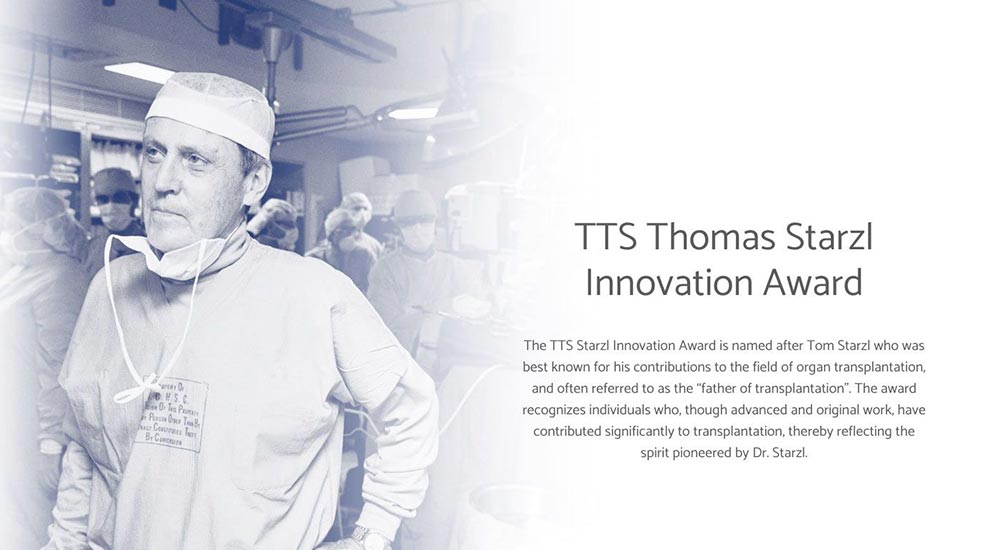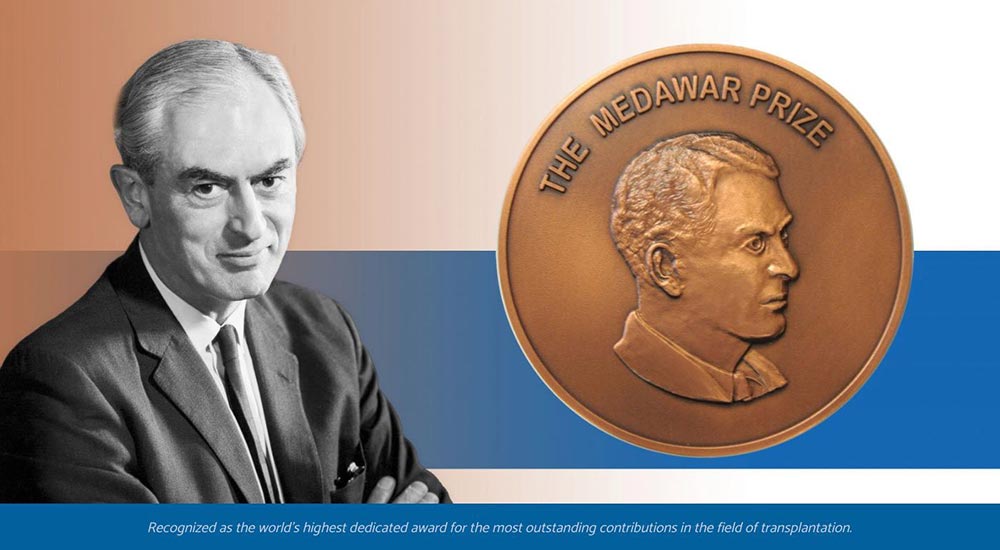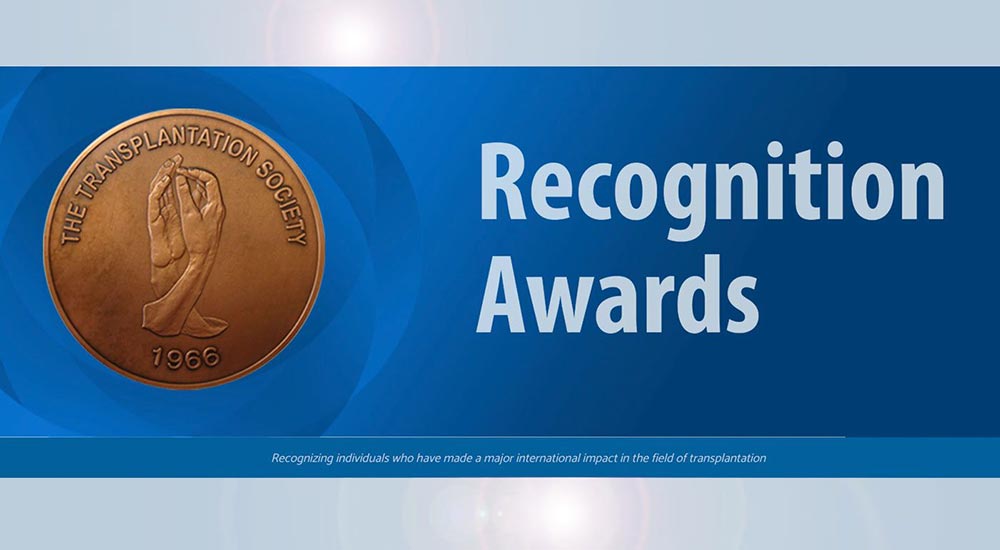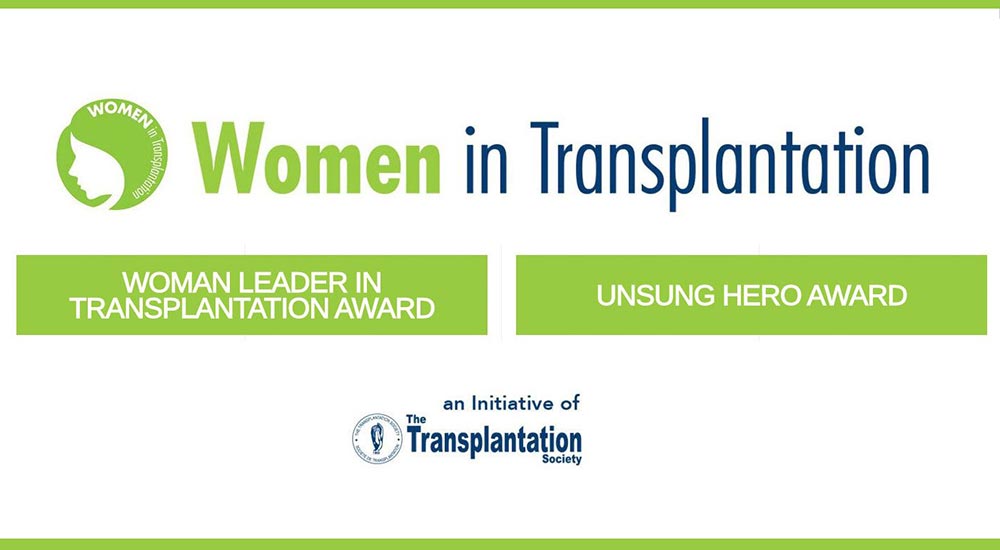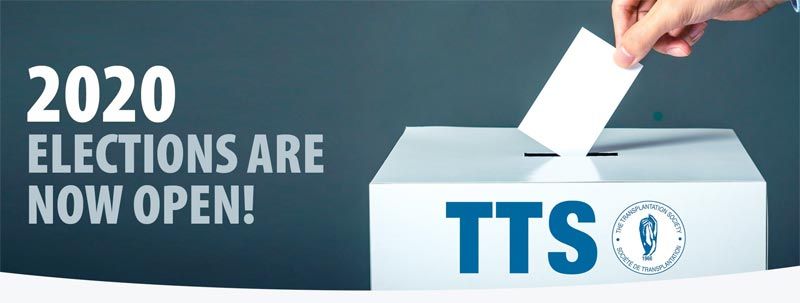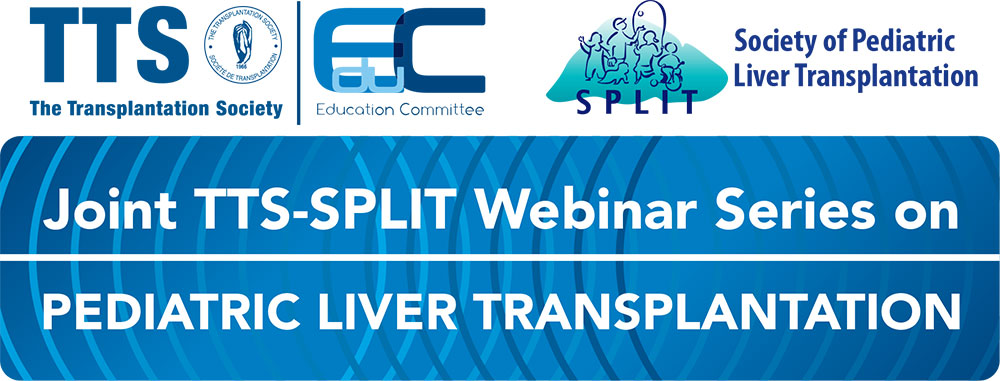
TTS 2020 CALL FOR AWARDS ANNOUNCEMENT & NEW TTS STARZL INNOVATION AWARD
TTS THOMAS STARZL INNOVATION AWARD
Application Extended Deadline - May 22, 2020
The award recognizes individuals who, though advanced and original work, have contributed significantly to transplantation, thereby reflecting the spirit pioneered by Dr. Starzl.
THE MEDAWAR PRIZE
Application Extended Deadline - May 22, 2020
Recognized as the world's highest dedicated award for the most outstanding contributions in the field of transplantation.
TTS RECOGNITION AWARDS
Application Extended Deadline - May 22, 2020
These awards recognize individuals who have made a major international impact in the field of transplantation.
WIT AWARDS
Application Extended Deadline - May 22, 2020
The Woman Leader in Transplantation Award and Unsung Hero Award will be presented to women with extraordinary impact in the field.
TTS 2020 OFFICERS AND COUNCIL ELECTIONS NOW OPEN
We are pleased to announce the start of the 2020 TTS Elections. We encourage you to participate in these elections to help determine your representatives for TTS Council.
JUST RELEASED - TRANSPLANTATION - MAY ISSUE
The expert TTS consensus on treatment of AMR is now available to guide clinical approaches. Liver allocation systems—distances, gender, and other factors—are dissected. Intestinal transplant indications are critically reassessed. The problem of malignancy is addressed in the context of Checkpoint inhibitors and a long-term analysis of the SILVER study is presented. Basic Science models are advanced and the place of Mesenchymal Stromal Cells is expertly reviewed.
CLICK HERE TO ACCESS THIS ISSUE
TTS MEMBERS - CLICK HERE TO SIGN-IN FOR OPEN ACCESS THROUGH TTS.ORG
TRANSPLANTATION - HIGHLIGHTED ARTICLE

Dr. Joel T. Adler, Editorial Fellow, Transplantation
Education Strategies in Dialysis Centers Associated With Increased Transplant Wait-listing Rates
Waterman AD, Peipert JD, Xiao H, et al.
Transplantation: February 2020 - Volume 104 - Issue 2 - p 335-342
The dialysis center remains an important spigot for access to transplantation. Despite much study on how to increase waitlisting at each dialysis center, little is known about the best education strategies to promote access to the transplant waitlist. Waterman and colleagues surveyed transplant educators in 1694 United States Dialysis centers for their transplant education knowledge, practices, and barriers to success.
The authors found that oral transplant recommendations (adjusted IRR 1.20) and the use of more than one intensive education practice (adjusted IRR 1.17) were associated with increased waitlisting rates, while in-center patient discussions and distribution of print education were not helpful. The authors further explore the barriers to providing these interventions and noted that there were language barriers and poor communication between transplant and dialysis centers. This study provides an assessment of which education strategies are beneficial to improve waitlisting rates in the United States, as well as some barriers for targeted improvement.
TRANSPLANTATION - WEEK'S MOST DOWNLOADED PAPER
«HOT OFF THE PRESS» RECENT PUBLICATIONS IDENTIFIED BY TTS EDUCATION COMMITTEE ON COVID-19
This week's selection made by: Enver Akalin, Milagros Samaniego-Picota and Gabriel Gondolesi

Pharmacologic Treatments for Coronavirus Disease 2019 (COVID-19): A Review.
Sanders JM, Monogue ML, Jodlowski TZ, Cutrell JB.
JAMA. 2020 Apr 13. doi: 10.1001/jama.2020.6019. [Epub ahead of print]
PMID: 32282022
This is a review regarding pharmacologic treatment of patients with COVID-19. Currently, there is no evidence from randomized clinical trials that any potential therapy improves outcomes inpatients with either suspected or confirmed COVID-19.
Richardson S, Hirsch JS, Narasimhan M, Crawford JM, McGinn T, Davidson KW; and the Northwell COVID-19 Research Consortium, Barnaby DP, Becker LB, Chelico JD, Cohen SL, Cookingham J, Coppa K, Diefenbach MA, Dominello AJ, Duer-Hefele J, Falzon L, Gitlin J, Hajizadeh N, Harvin TG, Hirschwerk DA, Kim EJ, Kozel ZM, Marrast LM, Mogavero JN, Osorio GA, Qiu M, Zanos TP.
JAMA. 2020 Apr 22. doi: 10.1001/jama.2020.6775. [Epub ahead of print]
PMID: 32320003
Clinical outcomes were assessed for 2634 patients who were discharged or had died at the study end point. During hospitalization, 373 patients (14.2%) (median age, 68 years [IQR, 56-78]; 33.5% female) were treated in the intensive care unit care, 320 (12.2%) received invasive mechanical ventilation, 81 (3.2%) were treated with kidney replacement therapy, and 553 (21%) died. Mortality for those requiring mechanical ventilation was 88.1%.
Covid-19 and Kidney Transplantation.
Akalin E, Azzi Y, Bartash R, Seethamraju H, Parides M, Hemmige V, Ross M, Forest S, Goldstein YD, Ajaimy M, Liriano-Ward L, Pynadath C, Loarte-Campos P, Nandigam PB, Graham J, Le M, Rocca J, Kinkhabwala M.
N Engl J Med. 2020 Apr 24. doi: 10.1056/NEJMc2011117. [Epub ahead of print] No abstract available.
PMID: 32329975
Montefiore Medical Center reported clinical outcomes of 36 consecutive adult kidney transplant recipients. 28 patients (78%) required hospital admission. Twenty-seven (96%) of hospitalized patients had imaging findings of viral pneumonia, 11(39%) required mechanical ventilation and 6 (21%) required renal replacement therapy. Mortality was 10 (28%) overall, 7 (64%) in intubated patients, with a median follow-up of 21 days (range 14-28).
Alberici F, Delbarba E, Manenti C, Econimo L, Valerio F, Pola A, Maffei C, Possenti S, Piva S, Latronico N, Focà E, Castelli F, Gaggia P, Movilli E, Bove S, Malberti F, Farina M, Bracchi M, Costantino EM, Bossini N, Gaggiotti M, Scolari F; Brescia Renal COVID Task Force.
Kidney Int Rep. 2020 Apr 4. doi: 10.1016/j.ekir.2020.04.001. [Epub ahead of print] Review.
PMID:32292866
Italian experience in 20 kidney transplant recipients with COVID-19 pneumonia documented a fast progression in more than 75% of their patients with 25% mortality during a median follow-up of 7 days.
Early Impact of COVID-19 on Transplant Center Practices and Policies in the United States.
Boyarsky BJ, Chiang TP, Werbel WA, Durand CM, Avery RK, Getsin SN, Jackson KR, Kernodle AB, Van Pilsum Rasmussen SE, Massie AB, Segev DL, Garonzik-Wang JM.
Am J Transplant. 2020 Apr 13. doi: 10.1111/ajt.15915. [Epub ahead of print]
PMID: 32282982
This article reports the early impact of COVID-19 on transplant Center Practices and Policies in the US. Complete suspension of living-donor kidney transplant activity was reported by 71.8%, and living-donor liver transplant activity by 67.7%. Suspension of deceased-donor transplant activity was less frequent with restrictions for kidney donors in 84% and for liver donors by 73%, associated with the regional incidence of COVID-19.
Fix OK, Hameed B, Fontana RJ, Kwok RM, McGuire BM, Mulligan DC, Pratt DS, Russo MW, Schilsky ML, Verna EC, Loomba R, Cohen DE, Bezerra JA, Reddy KR, Chung RT.
Hepatology. 2020 Apr 16. doi: 10.1002/hep.31281. [Epub ahead of print]
PMID: 32298473
In this article, the AASLD expert panel propose detailed guidelines for diagnosis and management of COVID-19 in patients with chronic liver disease and liver transplant recipients including donor and recipient selection recommendations during the pandemic.
COVID-19 in Solid Organ Transplant Recipients: Initial Report from the US Epicenter.
Pereira MR, Mohan S, Cohen DJ, Husain SA, Dube GK, Ratner LE, Arcasoy S, Aversa MM, Benvenuto LJ, Dadhani D, Kapur S, Dove LM, Brown RS, Rosenblatt RE, Samstein B, Uriel N, Farr MA, Satlin M, Small CB, Walsh T, Kodiyanplakkal RP, Miko BA, Aaron JG, Tsapepas DS, Emond JC, Verna EC.
Am J Transplant. 2020 Apr 24. doi: 10.1111/ajt.15941. [Epub ahead of print]
PMID: 32330343
This article reports 90 transplant recipients (46 were kidney recipients, 17 lung, 13 liver, 9 heart and 5 dual-organ transplants) at 2 centers in New York. Among the 68 hospitalized patients, 12% required non-rebreather and 35% required intubation. Sixteen patients died (18% overall, 24% of hospitalized, 52% of ICU) and 37 (54%) were discharged.
COVID-19 in solid organ transplant recipients: a single-center case series from Spain.
Fernández-Ruiz M, Andrés A, Loinaz C, Delgado JF, López-Medrano F, San Juan R, González E, Polanco N, Folgueira MD, Lalueza A, Lumbreras C, Aguado JM.
Am J Transplant. 2020 Apr 16. doi: 10.1111/ajt.15929. [Epub ahead of print]
PMID: 32301155
This article reports preliminary experience with 18 SOT (kidney [44.4%], liver [33.3%] and heart [22.2%]) recipients diagnosed with COVID-19. The mortality rate was 27.8%.
CORONAVIRUS (COVID-19) UPDATE DASHBOARD
The Transplantation Society (TTS) and our journal Transplantation have developed online resources to keep you informed on the Coronavirus (COVID-19) outbreak.
- TTS Coronavirus (COVID-19) Dashboard
www.tts.org/covid-19 - Transplantation Global Transplantation COVID Report
www.tts.org/txjcovid19
We are also requesting contributions and news from the transplant community to be sent to covid-19@tts.org for inclusion on our resources page.
In this dashboard, you will find links to TTS and other global and regional resources, as well as interactive maps, publications and webinars. We encourage you to explore this dashboard and share with your colleagues.
Website - www.tts.org/covid-19
Editors and contributors to Transplantation have shared their thoughts on how they are dealing with the current crisis. While we understand that the information of today may be quite different tomorrow in this fast-moving pandemic, this report will open our forum of an international exchange on COVID for the transplant community.
Website - www.tts.org/txjcovid19
Please send your own contributions and news to covid-19@tts.org for inclusion on our resources page.
TTS EDUCATION COMMITTEE: JOINT TTS-SPLIT WEBINAR ON PEDIATRIC LIVER TRANSPLANTATION
TITLE: Discussion on SPLIT Registry Analysis Demonstrating Improved Outcomes for Liver Transplantation in Patients with Biliary Atresia Since PELD Implementation
TTS and SPLIT have teamed up to present webinars on pediatric liver transplantation.
Objectives:
- Understand changes in disease severity of patients with biliary atresia awaiting liver transplantation
- Describe current risk factors affecting post-transplant patient and graft survival in biliary atresia and how these have evolved over time
- Understand the factors that influence risk stratification for deceased technical variant grafts in patients with biliary atresia
IN THE NEWS
IMPLICATIONS OF COVID-19 FOR HEART TRANSPLANTATION
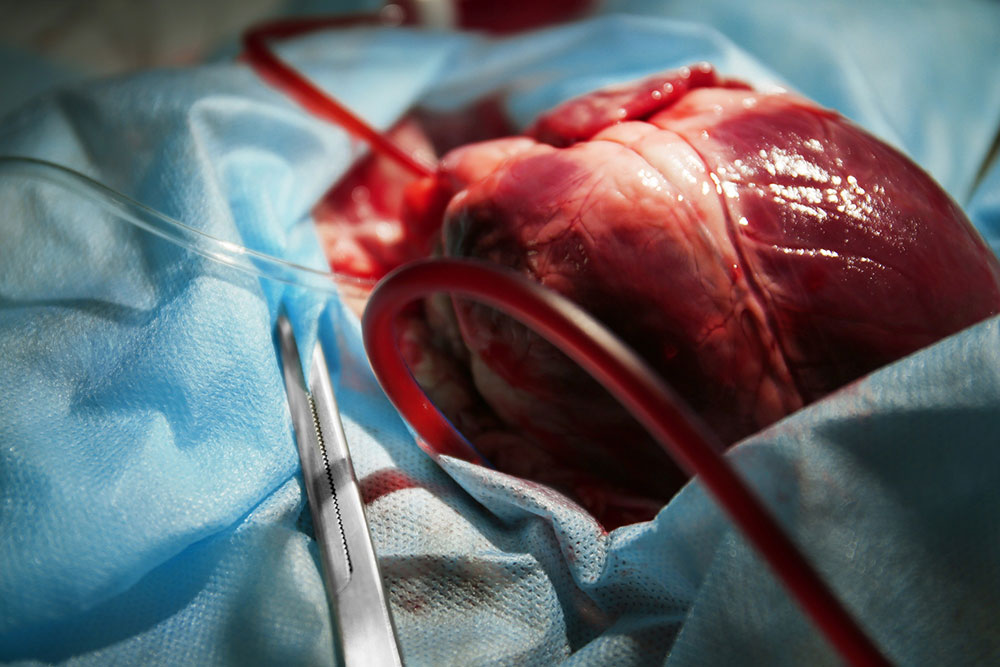
April 20 - Investigations into the presentation and prognosis of the novel coronavirus disease 2019 (COVID-19) in patients who have received a heart transplant are needed, according to an editorial published in The Journal of Heart and Lung Transplantation.
SMALL RISES IN BLOOD SUGAR CAUSE MAJOR CHANGES IN GENE EXPRESSION IN PANCREATIC BETA CELLS
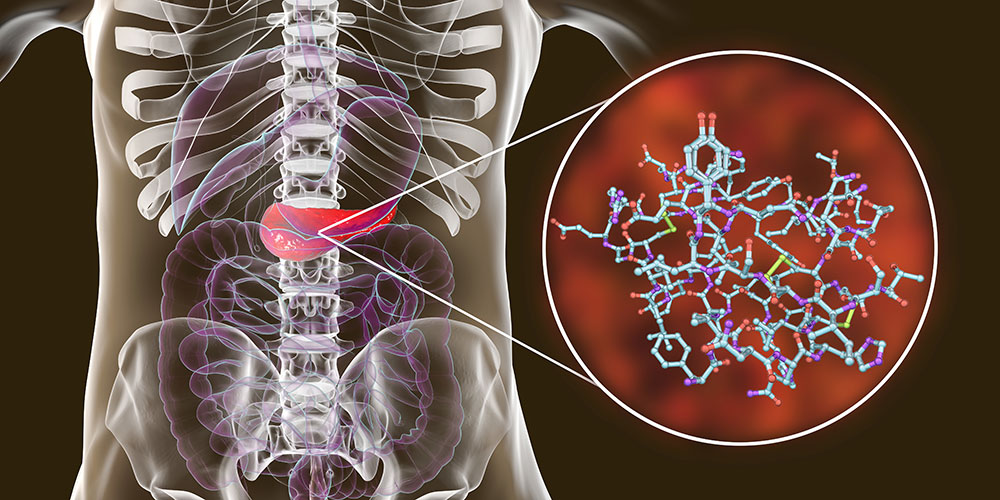
April 22 - New research from the Joslin Diabetes Center helps illuminate the process of glucose toxicity in pancreatic beta cells. Observing the behavior of these cells in lab rats following parial pancreatectomy, researchers were able to observe how small consistent rises in blood sugar levels typical of pre-diabetes caused changes in gene expression that impeded the ability of beta cells to produce insulin.
HOW TO DETECT KIDNEY ORGAN TRANSPLANT REJECTIONS: CRISPR, PEE AND A SMARTPHONE

April 23 - The first successful kidney transplant took place in 1954, a feat which later won a Nobel Prize in Medicine. Now, there are 94,886 US-based individuals awaiting a kidney transplant, where the average wait for a viable kidney can vary between three years to more than a decade. Even with a successful transplant, patients must continue to monitor their kidney function as organ transplants may be lost to viral infections and organ rejection, highlighting the urgent need for prospective diagnostics. In a new study, a group of scientists have developed a novel CRISPR-based diagnostic tool to tackle this very issue.
AAP: SCARCITY OF TRANSPLANT ORGANS DOES NOT JUSTIFY EXCLUDING CHILDREN WITH DISABILITIES
April 22 - The demand for transplantable solid organs far exceeds the supply of deceased donor organs. Like the debate as to which patients will receive lifesaving interventions during the coronavirus disease 19 (COVID-19) pandemic, individual transplant programs must make eligibility determinations based on the principle of utilitarianism — doing the greatest amount of good for the greatest number of people.
UPCOMING MEETINGS AND ANNOUNCEMENTS
3rd IPITA/JDRF/HSCI Conference on Stem Cell Derived Beta Cells
Contact
Address
The Transplantation Society
International Headquarters
740 Notre-Dame Ouest
Suite 1245
Montréal, QC, H3C 3X6
Canada
Используйте Вавада казино для игры с бонусом — активируйте промокод и начните выигрывать уже сегодня!

